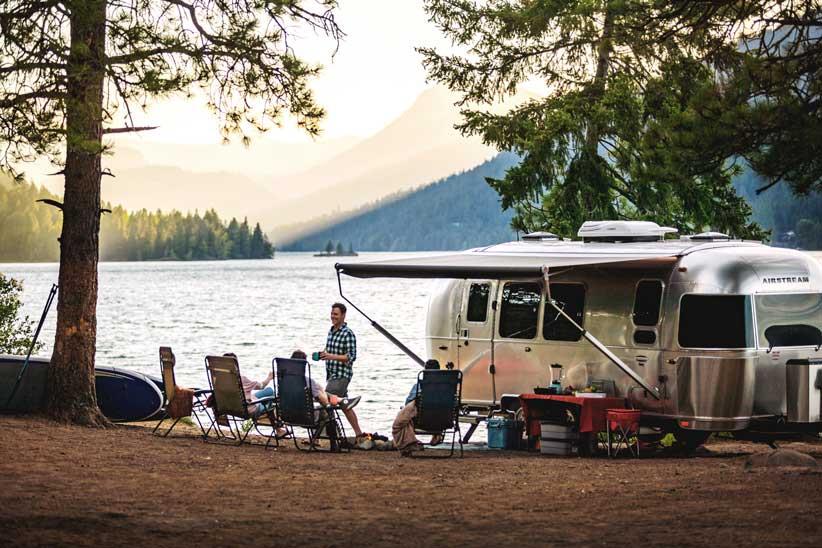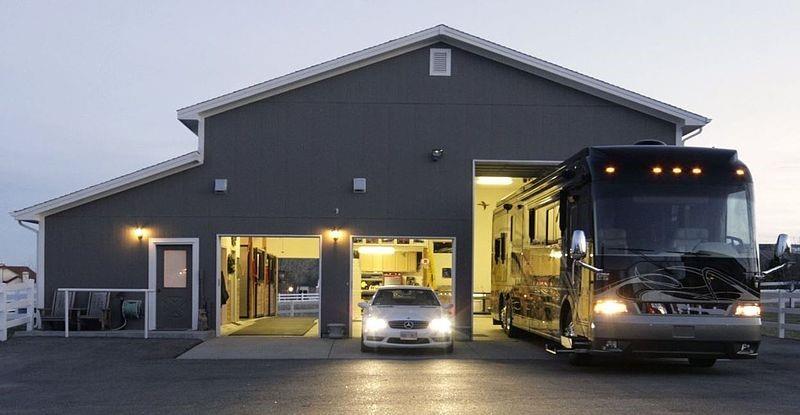
With just your RV, your family, and the open road, life is yours to live exactly how you want. While the full-time RV lifestyle is filled with fun and adventure, it is not a transition that should be taken lightly. RVers considering the jump to full-timing should consider many factors that range from the minute (can you cook in a much smaller kitchen?) to the massive (can you afford to live on the road full-time?). If the full-time RV lifestyle is something that you are interested in and you can manage the transition, Lazydays RV is happy to help. Preparing for full-time RVing is a lot of work, so we’ve broken down a few of the big picture items RVers need to consider.
Make Sure You Have the Right RV
After looking at the big picture aspects of transitioning to a full-time RV lifestyle (finances, a wildly different lifestyle, smaller housing, etc.), RVers should take stock of their current RV. A common misconception of living a full-time RV lifestyle is that you must have a massive Class A motorhome to do so comfortably. Depending on how you want to full-time RV, you can do so in anything from a pop-up camper to a Class A diesel motorhome. To get a sense of what kind of RV is best suited for your vision of full-time RVing, consider these factors:
- Where and how often you will be traveling: The journey and destination are both important to think about when full-time RVing. If you prefer boondocking and mobility, a Class B may suit you perfectly. If you see yourself spending a good amount of time at RV resorts and campgrounds in between major trips, then a Class A may be more comfortable. If you want the space of a Class A but the freedom of a Class B, a large Travel Trailer or Fifth Wheel provides the best of both worlds.
- Whether or not you will need to work: Depending on whether you will need to earn an income while on the road factors heavily into which RV is right for you. Class A motorhomes or toy haulers have spaces that are ideal for setting up a mobile office if your job allows you to telecommute. If you plan on work camping or working seasonally, then office space would not be as big of a concern.
- How many people you will be RVing with: Fitting a family of four is much more difficult in a Class B motorhome compared to a Class A. If you see yourself consistently RVing with more than three people, you should do so with a Fifth Wheel, Travel Trailer, Class C or Class A motorhome.
Sort Out the Finer Details
Once you have the right type of RV, you will need to smooth out the details of making such a major lifestyle transition. The first of which is deciding what to do with your home, apartment or condo. If you own your home, apartment or condo, selling or converting it to a full-time rental are the most common paths RVers choose. Consult with your family to determine what makes the most sense for you.
When it comes to furniture, home appliances, and other items, RVers have several options to choose from. Selling, gifting, donating or placing things in storage (or some combination) are all popular options that RVers take when transitioning to the full-time lifestyle. When it comes to clothing, think of transitioning to full-time like packing for an extended vacation. Start by packing the essentials for both warm and cold-weather trips. From there, base what else you bring on the size of your RV.
Once your houseware, clothing and other essentials are squared away, you will need to update your RV insurance and address. If you currently RV part-time, you can switch your existing insurance from recreational to full-time. Full-time RV insurance features all the existing coverages of standard RV insurance, with additional coverages added in when you list your RV as your permanent residence. In that vein, RVers will also need to list a state as their domicile. You will need to do so to register your RV, have a driver’s license, and for tax purposes.
Finally, take your RV in for a routine maintenance check-up to ensure it’s in top condition for the full-time lifestyle. Your pre-transition checklist should cover all essential systems including the engine, generator, plumbing, and freshwater systems. Lazydays RV offers a variety of service packages ideal for RVers looking to move to full-time RVing. Contact or schedule a service appointment at your nearest Lazydays location to get started!
Plan for the First Few Weeks
The move to full-time RVing is an exciting time that can feel hectic for many RVers. One of the best ways to help with the transition is to set a concrete plan for your first few weeks of life on the road. The spring and early summer are the best times of year to start full-time RVing. The weather is typically great, road conditions are ideal for long drives and RV parks and campgrounds are providing full services.
Depending on your level of RVing experience, hanging around your local area can be a comforting way to ease the transition into full-time RVing. Visiting the same grocery stores, restaurants, and other destinations during your first few weeks of living in your RV can keep a sense of normalcy and make the transition not feel so abrupt. From there, an RV trip to an RV resort or campground with hookups is a fun, easy trip and a great way to socialize with other full-time RVers. Afterward, use the time between trips to establish a routine, take care of additional maintenance, stock up on additional RV accessories you may need and settle into the routine of the full-time RV lifestyle.
If you’re thinking of full-time RVing or are beginning to do so, follow the Lazydays RV blog for all the RV lifestyle tips you need. From the best RV trips to take in Arizona and Colorado to must-have apps all RVers should have, the Lazydays blog is a great resource for full-time RVers. Happy RVing!



